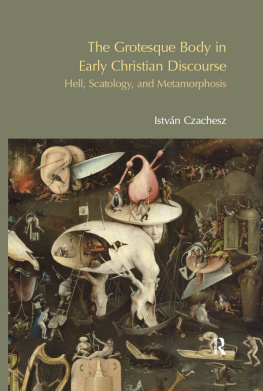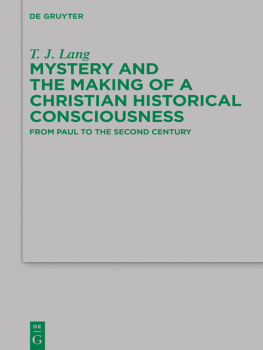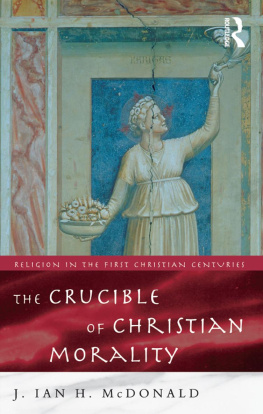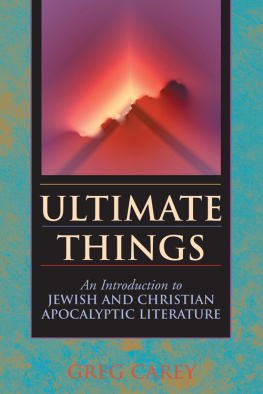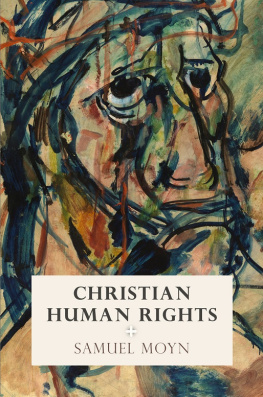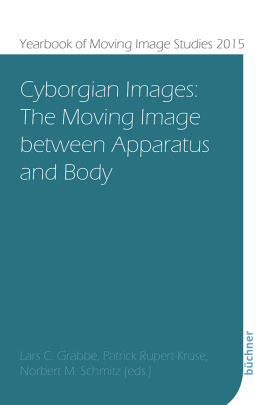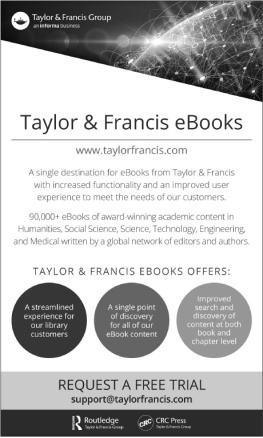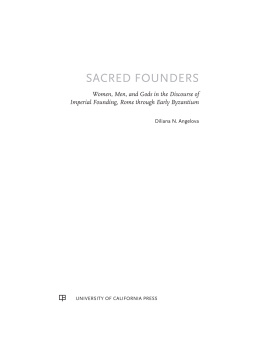
The Grotesque Body in Early Christian Discourse
BibleWorld
Series Editors: Philip R. Davies and James G. Crossley, University of Sheffield
BibleWorld shares the fruits of modern (and postmodern) biblical scholarship not only among practitioners and students, but also with anyone interested in what academic study of the Bible means in the twenty-first century. It explores our ever-increasing knowledge and understanding of the social world that produced the biblical texts, but also analyses aspects of the Bibles role in the history of our civilization and the many perspectivesnot just religious and theological, but also cultural, political and aestheticwhich drive modern biblical scholarship.
The Grotesque Body in Early Christian Discourse
Hell, Scatology, and Metamorphosis
Istvn Czachesz

First published 2012 by Equinox Publishing Ltd, an imprint of Acumen
Published 2014 by Routledge
2 Park Square, Milton Park, Abingdon, Oxon OX14 4RN
711 Third Avenue, New York, NY 10017, USA
Routledge is an imprint of the Taylor and Francis Group, an informa business
Istvn Czachesz 2012
All rights reserved. No part of this book may be reprinted or reproduced or utilised in any form or by any electronic, mechanical, or other means, now known or hereafter invented, including photocopying and recording, or in any information storage or retrieval system, without permission in writing from the publishers.
Notices
Practitioners and researchers must always rely on their own experience and knowledge in evaluating and using any information, methods, compounds, or experiments described herein. In using such information or methods they should be mindful of their own safety and the safety of others, including parties for whom they have a professional responsibility.
To the fullest extent of the law, neither the Publisher nor the authors, contributors, or editors, assume any liability for any injury and/or damage to persons or property as a matter of products liability, negligence or otherwise, or from any use or operation of any methods, products, instructions, or ideas contained in the material herein.
ISBN-13 978-1-84553-885-9 (hardback)
British Library Cataloguing-in-Publication Data
A catalogue record for this book is available from the British Library.
Library of Congress Cataloging-in-Publication Data
Czachesz, Istvn, 1968
The grotesque body in early Christian discourse: hell, scatology, and metamorphosis/Istvn Czachesz.
p. cm.(BibleWorld)
Includes bibliographical references (p. ) and index.
ISBN 978-1-84553-885-9 (hb: alk. paper)
1. Christian literature, EarlyHistory and criticism. 2. Human body in literature. 3. Grotesque in literature. I. Title.
BR67.C93 2012
233.5dc23
2011030165
Typeset by S.J.I. Services, New Delhi
CONTENTS
This book is largely based on my Habilitationsschrift at the Theological Faculty of the University of Heidelberg, defended in December 2007. My interest in the grotesque started when I came into contact with Mikhail Bakhtins writings a decade and a half ago, and my fascination with the subject grew continuously as I worked on different areas of the New Testament and early Christianity and discovered how widespread and constitutive the grotesque representation of the human body was in ancient Christian discourse. Eventually, it came to me as a surprise that despite the ongoing interest in the grotesque in literary criticism and the never-ceasing popularity of Jewish and Christian apocalyptic texts in theology, exegesis, and art, no monographic treatment had been yet written on the use of the grotesque in early Christian literature. After touching on many different aspects of the subject in articles and lectures, the plan of writing this book was a natural step.
The VENI fellowship of the Netherlands Organization for Scientific Research enabled me to carry out much of the research. For providing me with most exciting and pleasant research environments, I am thankful to the Faculty of Theology and Religious Studies at the University of Groningen, the Centre for Advanced Study at the Norwegian Academy of Science and Letters (where I was member of the group Metamorphoses: Resurrection, Taxonomies and Transformative Practices in Early Christianity, directed by Turid Karlsen Seim), the Helsinki Collegium for Advanced Studies, the Department of Biblical Studies at the University of Helsinki, and the Faculty of Theology at the University of Heidelberg. In Heidelberg I am especially thankful to Gerd Theissen, whose encouragement, support, and advice was invaluable in both the process of habilitation and the revision of the text for publication.
I am grateful to many excellent colleagues for inspiring discussions on various parts and aspects of the project over the years, including Jan Bremmer, Joseph Bulbulia, John Collins, Ingvild Gilhus, Ton Hilhorst, Karen King, Outi Lehtipuu, Hugo Lundhaug, Gerard Luttikhuizen, Florentino Garca Martnez, Tobias Nicklas, Jorunn kland, Troels Engberg-Pedersen, Pierluigi Piovanelli, Lautaro Roig, Samuel Rubenson, Turid Karlsen Seim, Vigdis Songe-Mller, Gerd Theissen, Einar Thomassen, Eibert Tigchelaar, and Risto Uro.
For their help in editing the final manuscript, I thank Svetlana Kirchenko, Kirsi Reyes, and Monika Schatz. I am also thankful to Equinox, and particularly to the series editors, Philip Davies and James Crossley, for including the book in the BibleWorld series and providing me with enthusiastic support in bringing the book project to completion.
As always, I am deeply indebted to my family for their support and understanding.
Unless noted otherwise, citations from the Bible are adapted from the New Revised Standard Version (Grand Rapids, 1989). When translating passages from apocryphal literature, I often adapted the text of J. K. Elliott, The Apocryphal New Testament: A Collection of Apocryphal Christian Literature in an English Translation Based on M. R. James (Oxford: Oxford University Press, 1993; rev. repr., 1999).
Istvn Czachesz
Helsinki
Some of the chapters in this book are based on studies formerly published elsewhere. I thank the publishers for giving me permission to use the texts.
.
.
.
.
.
: Speaking Asses in the Acts of Thomas, in G. H. van Kooten and J. T. A. G. M. van Ruiten (eds), The Prestige of the Pagan Prophet Balaam in Judaism, Early Christianity and Islam (Leiden: Brill), pp. 27585.
.
The influence of Russian literary critic Mikhail Bakhtin (18951975) on contemporary cultural studies cannot be overestimated.
One of the themes that captivated both Rabelais and Bakhtin was the paradoxical, grotesque nature of the underworld in Western literary tradition. Not only literary critics find hell a fascinating subject of study. The themes of Jewish and early Christian apocalyptic literature continue to capture the imagination of Western readers, including academics and the broad public alike. Given this interest in the grotesque as well as in the genesis of the Christian underworld, a study of the grotesque in hell is a much-needed and timely endeavor. The literary use of the grotesque in early Christianity, however, is not restricted to the underworld. In this book, I integrate the subjects of hell, scatology, and metamorphosis into a unified treatment of the grotesque body
Next page
